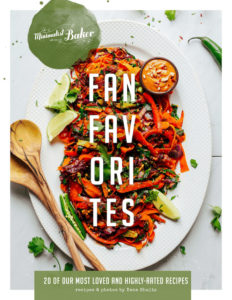Current Setup
- Aputure Light Dome 35″ Soft Box with Bowen-S Speed Ring
- Aputure COB 300D LS C300D Daylight Balanced LED Video Light
- Neewer Heavy Duty Adjustable Light Stand
- Paul C. Buff Einstein E640 + CyberSync Transceiver
- PocketWizard FlexTT6 Transceiver for Canon Cameras & Flashes
- Westcott 2334 28-Inch Recessed Medium Apollo (Black)
- Westcott 2348 50-Inch Recessed Mega JS Apollo (Black)
- Canon Speedlite 580EX II Flash for Canon EOS Digital SLR Cameras
*We bought these items from a local camera shop. Although that was fine, we are indifferent on the brand. We feel that the recommendations below are comparable products (I’d probably recommend an LED kit like this)available for better values.
Disclosure: This page contains affiliate links meaning we earn a commission if you use those links. We only recommend brands we trust.
Advice & Recommendations
We have found the most success with LED lights and recommend them for most artificial lighting scenarios. Although we own and occasionally use strobe lights, the LED lights are our go-to lighting setup.
Soft boxes and diffusers greatly help soften the light and are preferable if your budget allows.
Purchasing lighting equipment is difficult and confusing. For simplicity, buying a kit provides a solid package that you know includes everything you need.
Two lights are typically sufficient for any artificial lighting scenario in food photography. We bought a three light kit for freelance jobs (in case a light goes out, etc.), but it’s really not necessary.
LED/Continuous Light Recommendations
StudioPRO Double 600 S-600D LED Photography Lighting Panel and Light Stand Kit
Bescor LED-200K Twin 300W Kit
Genaray SpectroLED Essential 240 Daylight LED 2-Light Kit with Stands
Bescor FP-500K Bi-Color LED Two Light Kit
*We have found the most success with these types of lights and recommend them for most artificial lighting scenarios.
Strobe Light Recommendations
Neewer Set of Two 600W Photography Monolight Softbox Kit
StudioPRO 400 Watt Photography Studio Monolight Strobe Flash Lighting Head SD-400 (Not a kit – you’ll need to buy accessories separately. However, this would be a solid strobe)
Impact Two Monolight Kit with Bag (120VAC)
Elinchrom D-Lite RX 4 2-Light To Go Kit with Stands and Bags (The builtin wireless and bags would be a huge benefit.)
ProMaster PL400 3-Light Studio Lighting Flash Kit (This is our set, but we’d probably opt for the Elinchrom set over this one if we bought one today.)
Lighting Accessory Recommendations
Collapsible Multi-Disc Light Reflector (Comparable to the Polaroid version in our set.)
Manfrotto 055XPROB Pro Tripod Legs & Manfrotto 410 Junior Geared Head
Sync Cords or Wireless Transmitter (depends on the system you’re using)
FAQs
LED or Strobe lights?
Ah! Such a hard question. We’ve used both and almost always opt for the LED lights.
One of the biggest benefits is that they are continuous lights (easy to see where your shadows will be, etc.), and they don’t emit much heat. Considering we are working with food, how much heat your light produces is a HUGE deal. Being able to take our time to setup the lights correctly and still get a great shot makes these preferable over most any other option.
Two small LED lights can usually do almost everything you need, making them an overall more affordable option.
Strobe lights are a great option and yield the most natural effect. We use ours primarily in professional settings and feel you have to be more skilled to use them properly. One problem we’ve noticed is they are often too bright for what we do on a day-to-day basis. It sounds counterintuitive, but you’ll find you more often have too much light and would like to lessen its impact compared to having not enough light.
What about fluorescent lights?
You may see cheaper artificial lighting kits that use fluorescent lights that use traditional lightbulbs.
The problem is that you’re trying to make your photos look like you didn’t use artificial lighting. We haven’t used one of these sets, but the type of light emitted from these types of bulbs would likely make your work look a bit too artificial.
If you’re buying an artificial lighting set, it seems prudent to actually get a set that aims at mimicking daylight rather than just providing light. Therefore, we’d probably not recommend one of these sets.
How much should I pay?
This is hard, but the above packages give a pretty good recommendation for starter options and a few more expensive options. Ideally, you pay as much as you can reasonably afford.
At the same time, we would recommend you forward any available funds into your camera first, if necessary. Having a good camera setup and lens will likely trump your artificial lighting needs.
Are soft boxes / diffusers worth it?
Yes. They soften the light and help make even the cheaper lights more like natural light.
What about a tabletop / glow lighting option?
We’ve seen some of those and can understand why they look appetizing, but we haven’t ever used them. Their biggest features is that they are simple, making them seem very approachable.
However, they ultimately seem a bit too limited and inflexible for our uses. We’d opt for a cheap LED setup over one of these sets.
Should I get a transmitter / is it necessary?
Transmitters are only necessary when you are using strobe lights (they flash when your camera clicks). If you don’t use a transmitter, you need to use a sync cable.
The sync cable is literally a cable connecting your camera to your flash. It’s fine and we’ve used them, but if you move much, it can be a bit of a hassle.
In short, one of the two are necessary, and if you can splurge for it, the wireless transmitters make a big difference.
Looking at Camera Equipment too? Checkout what’s in our Camera Bag.
